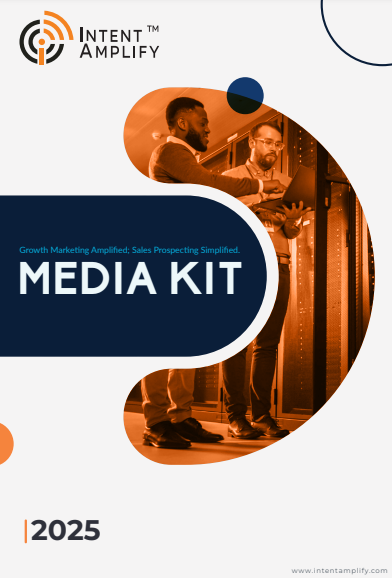
How to Increase Brand Value of B2B Businesses in a Recession: Three Ways
- Last updated on: September 23, 2022
Times are tough. Budgets are tight, uncertainty is everywhere, and the word “recession” keeps popping up in every boardroom conversation. For B2B businesses, that means your buyers are thinking twice before spending a single rupee or dollar. They’re asking harder questions, taking longer to decide, and looking closely at which brands actually bring value, not just talk about it.
So what can you do when growth slows down and trust becomes the real currency? Simple: don’t disappear. Show up with real solutions, stay connected to what your buyers care about, and build a brand that feels reliable – even when everything else feels shaky. Let’s break down three ways your B2B businesses can strengthen their brand value in a tough economy without throwing your budget out the window.
Why Brand Value Matters More in a Recession?
In stable times, B2B decisions often hinge on performance, features, and familiarity. But in a downturn? Buyers lean on trust and risk mitigation. Your brand must communicate not just what you offer, but why you’re worth it, even when budgets tighten.
That’s why increasing your brand value isn’t just a marketing play – it’s a survival strategy. The stronger your brand, the more resilient your revenue streams. When others go dark, trusted brands stay top of mind. And when decision-makers finally say “yes,” they’ll say it to the company that never disappeared. Let’s explore three essential strategies that help B2B businesses increase brand value in a recession, without breaking the bank.
1. Start With Empathy: Understand What Your Customers Are Solving For
You can’t sell solutions without understanding the real problem. In a recession, your customers’ top priorities often shift – from growth and innovation to cost reduction, retention, and operational efficiency. That means you need to tune into their evolving needs.
Start by asking better questions:
- What internal pressures are they facing?
- What outcomes matter most to them this quarter?
- What does success look like in their role during a downturn?
When you make the effort to understand these nuances, your messaging becomes more relevant, and your brand becomes more trusted. This isn’t about guesswork. It’s about asking your sales team, reviewing customer calls, and getting on LinkedIn to observe what your target accounts are saying.
Now, let’s translate that into action. Adjust your messaging to focus less on features and more on outcomes. Show how your solution reduces cost, improves efficiency, or protects against risk. Back your claims with real customer stories, short videos, or case studies that highlight tangible results.
This level of empathy isn’t just appreciated – it’s expected. According to a 2025 Gartner study, 72% of B2B buyers said vendors that demonstrated a deep understanding of their business challenges were more likely to make their shortlist. Empathy, when practiced consistently, doesn’t just increase sales – it builds long-term brand equity.
2. Don’t Cut Visibility: Maintain (or Even Expand) Your Marketing Spend
Let’s address the elephant in the boardroom. When revenue slows, marketing budgets are often first on the chopping block. But cutting visibility in a downturn is like turning off your GPS in a storm – it might save battery, but it increases your chances of getting lost.
The data supports this. Brands that stay visible during economic slowdowns tend to recover faster and grow stronger. Why? Because while competitors go quiet, your voice becomes more prominent. You get more attention, more engagement, and eventually, more market share.
Here’s what this means in practical terms:
- Keep showing up. Don’t vanish from LinkedIn, email, or search. Double down on the platforms your buyers use.
- Shift your content. Create educational assets that help prospects do more with less – guides, ROI calculators, recession checklists, and how-tos.
- Go deeper, not broader. Instead of spreading your message thin, focus on 2-3 core segments and tailor your message to each.
Personalization is key. Use intent data and CRM insights to deliver targeted content based on your buyer’s stage in the funnel. For example, if a CFO is reviewing tools to cut costs, your content should speak directly to the financial impact of your solution, not just features.
And yes, this works. As Matt Kleinschmit of Reach Insights puts it, “Brands that emotionally and culturally connect with consumers can boost mind share and sales, while those that stop advertising are often excluded from purchasing decisions.”
The bottom line? If you disappear now, you risk losing more than just short-term leads—you lose trust, credibility, and relevance.
3. Build a Value-Based Offer That Makes Saying Yes Easier
Here’s what every B2B buyer is thinking right now:
“Is this going to deliver value not just now, but six months from now, too?”
Your brand must answer that question clearly, and your offer must reinforce it. That’s why value-based selling is critical. This doesn’t mean offering discounts for the sake of it. Instead, it means structuring your offer so that the perceived value outweighs the perceived risk. Let’s break down a few ways to do this:
a. Extend Trials or Introduce a Freemium Tier
Allow prospects to try your product or service with minimal commitment. A longer trial period can ease budget concerns and give your solution a chance to prove itself.
b. Show Long-Term ROI
Don’t just highlight what you deliver this quarter—show the cumulative value over a year or two. Use TCO (total cost of ownership) models and customer success data to back up your claims.
c. Introduce Tiered Pricing
Give buyers flexibility. Create entry-level plans with the option to scale later. This “land and expand” model is particularly effective in recessions because it aligns with buyer caution while leaving room for growth.
d. Layer in Strategic Support
Sometimes value isn’t just about the product – it’s about the partnership. Offer implementation support, priority onboarding, or quarterly strategy reviews. This shows you’re not just a vendor, but a trusted advisor.
All these tactics help reframe your brand from a cost center to a value center. And that shift is what drives long-term brand strength, even when deals take longer to close.
A Bonus Strategy: Double Down on Trust Signals
In uncertain times, people seek safety, and that applies to business decisions too. Buyers want reassurance that they’re making the right call. That’s why your trust signals need to be front and center.
Here’s what to include:
- Update case studies from industries or companies that align with your target audience.
- Recent testimonials from current customers.
- Third-party validation, such as certifications, awards, or press coverage.
- Clear refund or exit policies that reduce perceived risk.
Also, make sure your website reflects current offerings, speaks in the language of your customers, and loads fast on all devices. A slow, outdated, or generic site weakens trust instantly. Trust is not built overnight, but it is earned with consistency, proof, and transparency. And when trust is high, brand value follows.
Recessions Test Brands – But They Also Reveal Leaders
Let’s be honest – no B2B brand enjoys selling in a downturn. Budgets are frozen. Sales cycles stretch. Decision-makers are harder to reach. But this is also the moment when true brand value stands out.
If you focus on understanding customer goals, staying visible with relevant content, and structuring your offers to deliver real value, you won’t just survive the recession – you’ll come out stronger.
Remember, your brand isn’t just a logo or slogan. It’s the sum of every experience a customer has with your business. So use this time to deepen those experiences, build trust, and prove, beyond a doubt, that your brand is built to last.
FAQs
1. What is brand value in B2B businesses, and why does it matter in a recession?
Brand value is the perceived worth of your company in the eyes of your customers. In a recession, it influences trust, pricing power, and buyer loyalty, especially when decisions get delayed or budgets are tight.
2. Should B2B businesses cut marketing during a downturn?
Not at all. Cutting marketing spend can hurt long-term visibility and trust. Instead, shift your message to highlight value and relevance, and focus on your most engaged channels.
3. How can B2B businesses offer value without slashing prices?
Create flexible pricing models, offer longer trials, add strategic support, and showcase ROI. These approaches show value without devaluing your solution.
4. What content works best during a recession for B2B marketing?
Think ROI calculators, product comparisons, customer success stories, and cost-saving tips. Focus on helping buyers make smarter, safer decisions.
5. How long does it take to rebuild brand value after a downturn?
It depends, but consistency is key. Brands that maintain visibility, trust, and support often bounce back faster than those that go silent.




